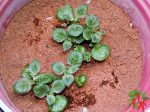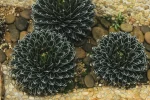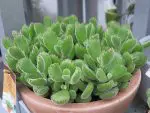This post contains affiliate links. If you buy something from one of our links we may earn a commission. Thanks
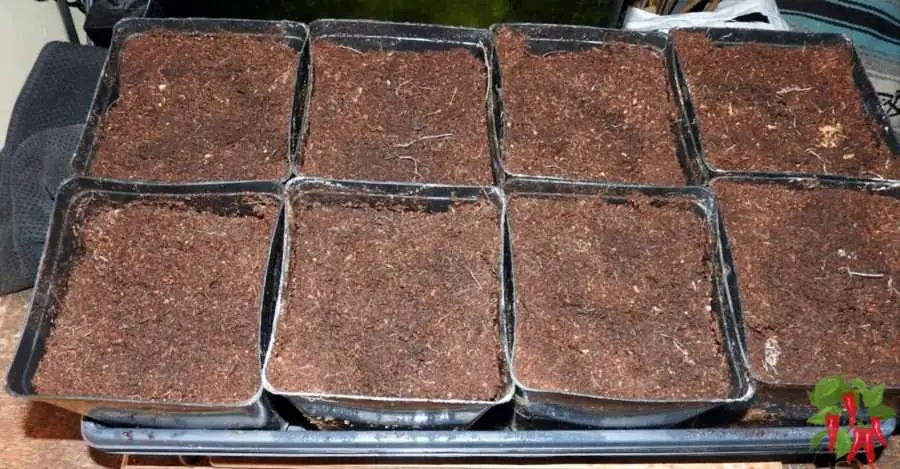
Discover the wonders of coco coir for indoor plants with our ultimate guide! Learn about its benefits, what plants love it, and how to use this eco-friendly medium.
Advantages of coco coir for indoor plants include excellent water retention, improved aeration, and resistance to fungal growth. It’s also an eco-friendly alternative to peat moss. Coco coir provides a neutral pH level, making it suitable for a wide range of plants. Its light texture promotes healthy root development.
Are you looking for a sustainable and eco-friendly growing medium for your indoor plants? Look no further! Coco coir for indoor plants is here to save the day.
This remarkable, renewable resource has taken the gardening world by storm, and for good reason. In this guide, we’ll explore the amazing benefits of coco coir, which plants thrive in it, and how to use it to keep your indoor garden healthy and happy.
So, let’s dive into the world of coco coir and transform your indoor plant care routine!
Introduction-coco coir for indoor plants
Have you heard about the fantastic world of coco coir for indoor plants? If not, you’re in for a treat.
As a sustainable and eco-friendly alternative to traditional growing mediums, coco coir offers a wealth of benefits for your beloved green companions.
In this guide, we’ll take you on a journey to discover all there is to know about this incredible growing medium, including its benefits, best practices, and more.
So, let’s get started and elevate your indoor gardening game with the power of coco coir!
Coco Coir: A Game Changer for Plant Care
Coco coir, derived from the husks of coconuts, is a fantastic growing medium that offers a unique combination of benefits for your indoor plants.
It has excellent water retention properties, while also providing ample aeration and drainage.
Plus, its natural resistance to pests and diseases makes it an ideal choice for those looking to create a healthy environment for their leafy friends.
But that’s not all – coco coir also boasts a near-neutral pH level, which means it’s compatible with a wide variety of plants.
Embracing Sustainability in Gardening
In today’s world, where environmental concerns are becoming increasingly important, adopting sustainable practices in our daily lives is crucial.
When it comes to indoor gardening, choosing eco-friendly growing media is a significant step toward minimizing our environmental footprint.
By using coco coir, you’re not only giving your plants the best care, but you’re also helping to conserve valuable resources like peat moss, which takes centuries to form.
As a renewable and biodegradable material, coco coir is a sustainable choice that makes a big difference for our planet.
What is Coco Coir?
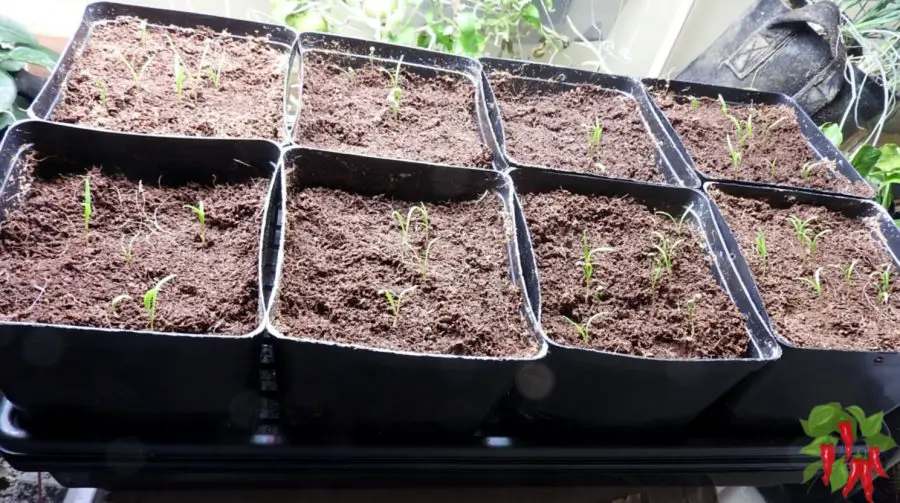
Ready to learn more about the magic of coco coir? Let’s dive into what it is and where it comes from.
Coco coir is a versatile and eco-friendly growing medium that’s changing the way we care for our indoor plants.
Extracted from the fibrous husks of coconuts, it has quickly gained popularity among gardeners for its remarkable properties and sustainable nature.
Before we explore its benefits and applications, let’s take a closer look at the different types of coco coir and their characteristics.
Unraveling the Coco Coir Mystery: Definition and Origin
Coco coir is a natural byproduct derived from the outer husks of coconuts.
Once considered waste material, it has now found its rightful place in the gardening world as a sustainable and effective growing medium.
The process of extracting coco coir involves removing the fibrous layers from the coconut shells and then processing them to create various forms of coco coir products, which are then utilized in horticulture.
The Coco Coir Family: Diverse Types for Diverse Needs
Coconut husks are turned into 3 basic products each with a different use. Some are combined to make the coco coir gardeners are familiar with while others like coconut chips are used as a specialty product.
Coco Peat: A Spongy Delight for Your Plants
Coco peat, also known as coir pith or coir dust, is the finely ground, spongy material that makes up the majority of coco coir.
Its excellent water retention capacity and ability to rehydrate quickly make it a popular choice for seed starting potting mixes, and hydroponic growing systems.
Coco peat can also help improve soil structure, making it perfect for amending heavy clay soils or enhancing moisture retention in sandy soils.
Coco Fiber: A Breath of Fresh Air for Your Roots
Coco fiber, sometimes referred to as coir fiber, is the more rigid and stringy component of coco coir.
It’s made from the long, coarse fibers that run through the husk of the coconut.
Coco fiber is known for its incredible ability to promote air circulation and drainage, making it an excellent choice for plants that require well-aerated root systems.
It’s commonly used as a standalone medium for orchids and air plants or mixed into potting soil to improve aeration.
Coco Chips: The Perfect Balance of Water and Air
Coco chips are small chunks of the coconut husk, which combine the water retention properties of coco peat with the aeration benefits of coco fiber.
They provide a well-balanced growing medium that is particularly suitable for container gardening and hydroponic systems.
Coco chips are an excellent choice for gardeners seeking a more sustainable alternative to perlite or bark chips, as they offer similar benefits while being eco-friendly and renewable.
Coco Coir Is A Blend
In the world of gardening, the term “coco coir” is often used to encompass all forms of the material, including coco peat, coco fiber, and coco chips.
However, the most commonly used form for indoor gardening is a blend of these components.
This blend offers the perfect balance of water retention, aeration, and drainage, making it an ideal growing medium for a wide variety of plants.
This versatile coco coir blend can be used as a standalone growing medium or mixed with other components like perlite, vermiculite, or compost to create a custom potting mix tailored to the specific needs of your plants.
By using coco coir in your indoor gardening routine, you’ll benefit from its sustainable nature while also providing an optimal environment for your plants to thrive.
Moreover, using coco coir not only supports healthier plant growth but also contributes to a more environmentally conscious approach to gardening.
As a renewable resource, coco coir stands out as an eco-friendly alternative to peat moss and other non-renewable growing media.
So, when you choose coco coir for your indoor plants, you’re not only making a wise decision for your green companions but also playing a part in protecting our planet’s valuable resources.
Coconut Coir Benefits
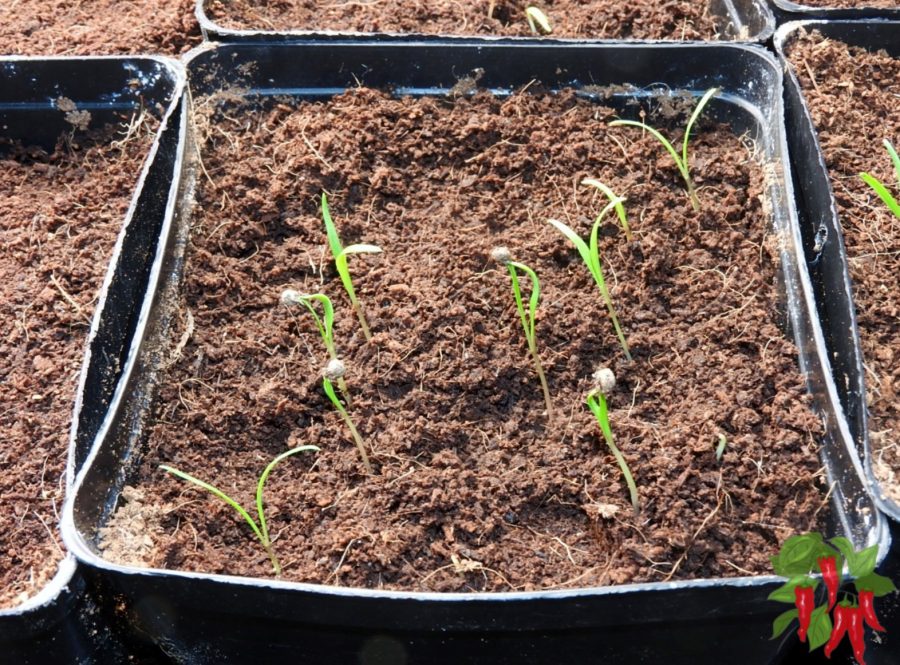
Are you eager to discover the incredible benefits of using coco coir in your indoor garden? You’re in for a treat!
This wonder material has gained popularity among plant enthusiasts for a variety of reasons.
From its eco-friendliness to its impressive horticultural properties, coco coir has something for everyone.
In this section, we’ll explore the top benefits of using coco coir as a growing medium and why it could be the perfect choice for your indoor plants.
Let’s dig in and uncover the secrets behind this amazing resource!
Going Green: Environmental Benefits of Coco Coir
Embracing Renewability: Coco Coir as a Sustainable Resource
Coco coir is a fantastic renewable resource, thanks to the abundance of coconuts in tropical regions.
The rapid rate at which coconuts grow and regenerate allows for a consistent supply of coco coir, making it a more sustainable choice compared to non-renewable alternatives.
By using coco coir, you’re not only nurturing your indoor plants but also supporting a more eco-friendly approach to gardening.
Protecting Peatlands: Reduced Peat Moss Usage
Peat moss, a popular growing medium, takes centuries to form and its extraction can cause severe environmental damage.
By opting for coco coir, you’re helping to reduce the demand for peat moss and promoting the conservation of peatlands.
This is a small, yet significant step towards a more sustainable and environmentally responsible gardening practice.
Growing Strong: Horticultural Benefits of Coco Coir
Breathing Easy: Air Circulation and Drainage
Coco coir’s unique structure allows for excellent air circulation and drainage. This promotes healthier root growth and prevents issues like root rot, which can plague plants in less aerated growing mediums.
With coco coir, you’ll provide your plants with the oxygen-rich environment they need to thrive.
Quenching Thirst: Water Retention
One of the standout features of coco coir is its ability to retain water without becoming waterlogged.
This ensures your plants have access to the moisture they need, while also preventing overwatering. It’s a win-win situation for you and your plants!
Keeping it Neutral: Natural pH Balance
Coco coir boasts a near-neutral pH level, usually ranging between 5.5 and 6.8. This makes it suitable for a wide variety of plants, as it won’t alter the pH of the surrounding soil or growing medium.
This means less pH adjustment for you and a happy environment for your plants.
Guarding Against Invaders: Resistance to Pests and Disease
Thanks to its natural resistance to pests and diseases, coco coir helps to create a safer environment for your plants.
Its antimicrobial properties can reduce the risk of common plant problems like fungus gnats, root rot, and mold.
With coco coir, you’re setting the stage for healthier, more resilient plants.
Is Coco Coir Good for Plants?
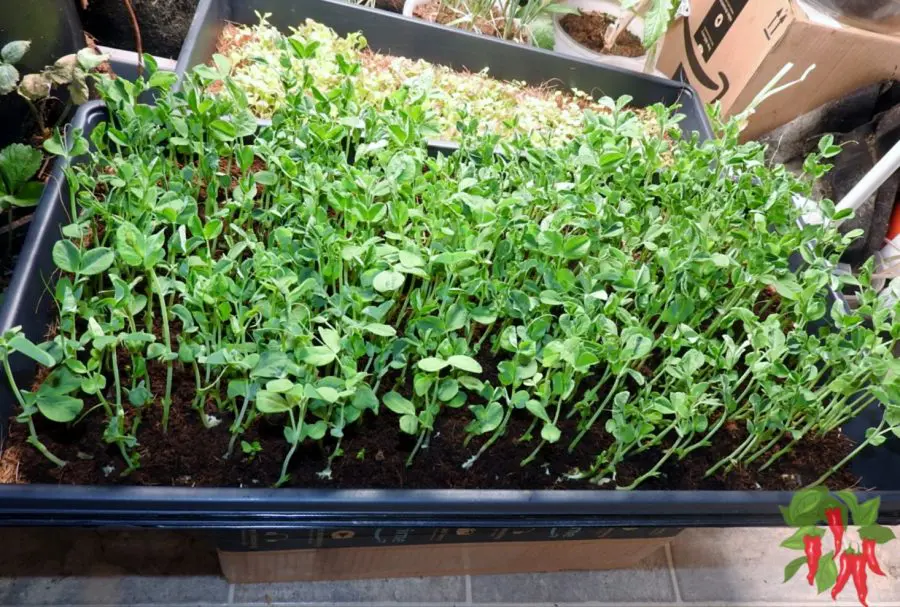
Now that we’ve explored the numerous benefits of coco coir, you might be wondering if it’s truly the right choice for your plants.
Well, you’re in luck! In this section, we’ll discuss the advantages of using coco coir as a growing medium, as well as some considerations to keep in mind.
We’ll help you make an informed decision and determine whether coco coir is the perfect match for your indoor plant family.
So, let’s dive deeper into the world of coco coir and see what it has to offer your leafy companions!
Canna Coco Is What I Use And Recommend
All coco coir is not created equally. Some cheaper brands contain high levels of salt making them unsuitable for growing plants.
Canna coco is prebuffered and very low in salts.
It also has consistently high quality and I have tried other brands but it still remains the best quality coco coir on the market.
It is available as coco bricks or loose and ready-to-use.
Coco has unique properties and requires a fertilizer made for coco for best results. Canna started the coco revolution and Coco A & B is still the best.
The Coco Coir Advantage: Boosting Plant Health and Happiness
Using coco coir for your plants comes with a host of advantages that can help your indoor garden thrive.
It’s superb water retention and drainage capabilities ensure that your plants receive the right amount of moisture without the risk of overwatering.
The excellent aeration provided by coco coir promotes strong root growth, ultimately leading to healthier, more vigorous plants.
Plus, its natural resistance to pests and diseases means you’ll be creating a safer environment for your green friends.
Coco Coir in Context: Limitations and Considerations
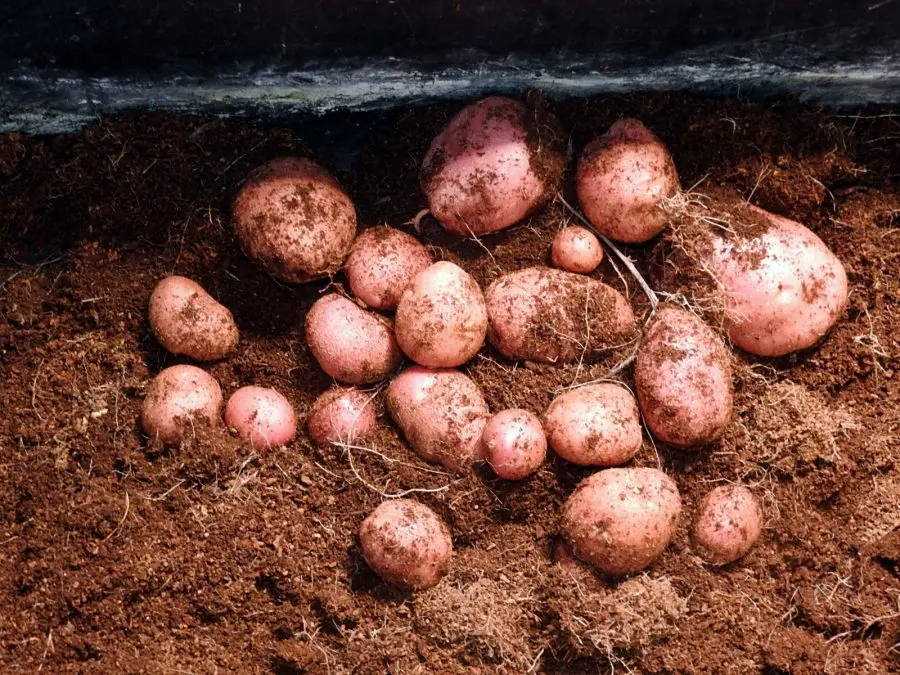
While coco coir is a fantastic growing medium, there are a few things to keep in mind before making the switch.
One potential limitation is that coco coir can sometimes contain high levels of salt, which could harm your plants.
To avoid this issue, it’s important to thoroughly rinse and buffer your coco coir before use.
Additionally, coco coir doesn’t provide essential nutrients for plant growth, so you’ll need to supplement with a balanced fertilizer to ensure your plants receive the necessary nutrients.
Customizing Coco Coir: Mixing with Perlite for Enhanced Performance
To further improve the performance of coco coir as a growing medium, consider mixing it with perlite.
Perlite is a lightweight, volcanic rock that helps to increase drainage and aeration in the growing medium.
By combining coco coir with perlite, you can create a custom potting mix that provides the perfect balance of moisture retention, drainage, and aeration for your plants.
A common ratio to start with is a 70:30 mix of coco coir to perlite, but feel free to adjust this ratio to suit the specific needs of your plants.
Experiment and find the perfect blend to keep your indoor garden flourishing!
What Plants Like Coco Coir?
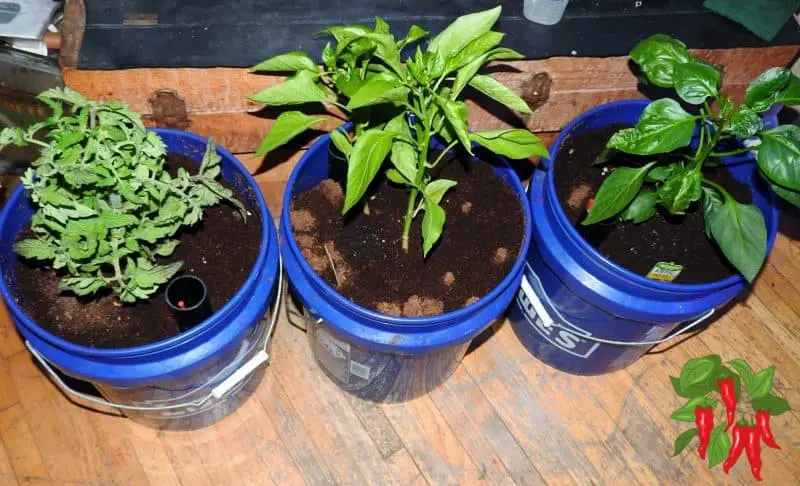
So, you’re intrigued by the benefits of coco coir and thinking about giving it a try, but you might be wondering which plants will truly flourish in this unique growing medium.
Well, you’re in the right place! In this section, we’ll discuss the types of plants that love coco coir and why it works so well for them.
From tropical houseplants to succulents, let’s explore the wide range of plants that can benefit from the coco coir experience and see if your favorite green companions are on the list!
Coco Coir Champions: Ideal Plant Types for this Growing Medium
Indoor Plants: A Perfect Match
Many common indoor plants adore coco coir, as it provides the right balance of moisture retention and aeration.
Popular choices like pothos, philodendrons, snake plants, and peace lilies can all thrive in this versatile medium.
So, if you’re an indoor plant enthusiast, coco coir could be your new best friend.
Seedlings and Cuttings: A Nurturing Environment
Coco coir is also ideal for starting seeds and rooting cuttings, thanks to its excellent water retention and soft, spongy texture.
This gentle medium provides the perfect environment for delicate seedlings and cuttings to develop strong root systems before being transplanted into their permanent homes.
Orchids and Epiphytes: An Airy Abode
Orchids and other epiphytic plants, such as bromeliads and air plants, require excellent drainage and aeration to flourish.
Coco coir’s ability to promote air circulation around the roots, while still retaining moisture, makes it an excellent choice for these unique plants.
Vegetables
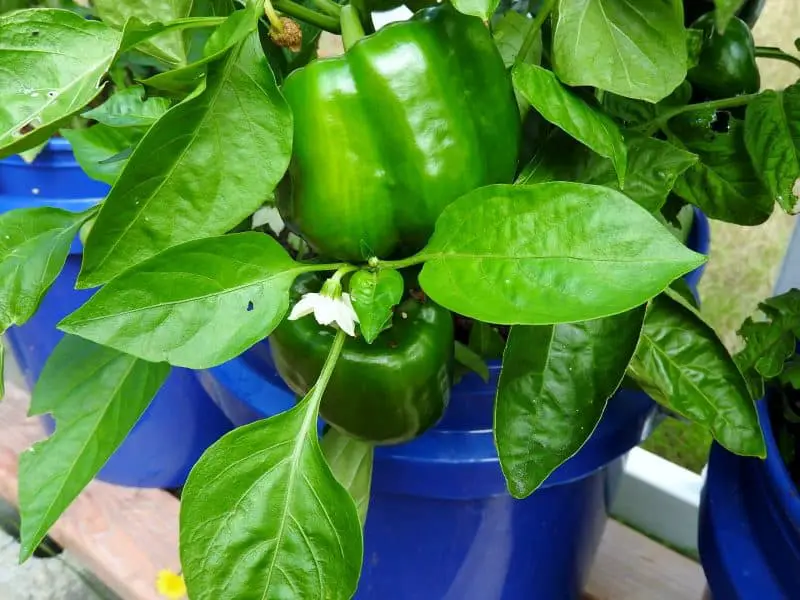
Coco coir is a fantastic growing medium for vegetables, offering numerous benefits that contribute to their healthy growth and development.
With its excellent water retention properties, coco coir ensures that your veggies stay well-hydrated without risking overwatering, thanks to its natural drainage capabilities.
The fibrous structure of coco coir promotes aeration, which is vital for robust root systems and better nutrient absorption.
Additionally, the natural resistance of coco coir to pests and diseases means your vegetables will be less susceptible to common gardening issues.
By choosing coco coir for your vegetable garden, you’re not only nurturing healthier, more productive plants but also contributing to sustainable gardening practices.
Microgreens
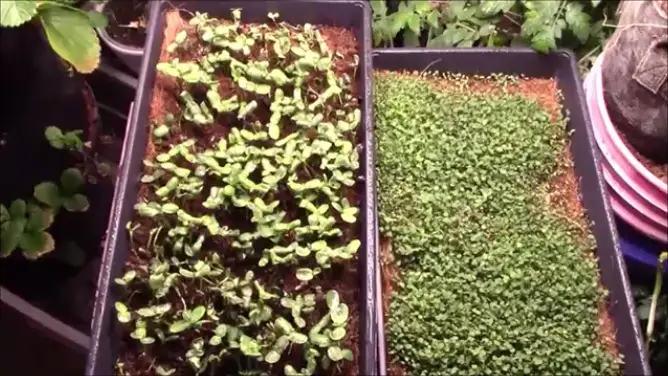
Coco coir is a remarkable growing medium for cultivating microgreens, offering numerous advantages that support their rapid and healthy growth.
The excellent water retention capacity of coco coir helps maintain consistent moisture levels, which is essential for germination and the development of delicate seedlings.
Its superior aeration encourages strong root growth and prevents issues like damping off, which can be detrimental to young plants.
Furthermore, the natural resistance of coco coir to pests and diseases ensures that your microgreens remain healthy and thriving throughout their growth cycle.
By opting for coco coir, you’re providing your microgreens with an optimal environment while also embracing environmentally friendly and sustainable gardening practices.
Proceed with Caution: Plants to Avoid Using Coco Coir With
While coco coir is an excellent growing medium for many plants, there are a few exceptions to keep in mind.
Plants that prefer alkaline soil or highly acidic soil or have specific nutrient requirements might not be the best candidates for coco coir.
Additionally, plants that require extremely dry conditions, such as certain cacti and succulents, may struggle in coco coir if it’s not mixed with a sufficient amount of a well-draining material like perlite or sand.
In these cases, it’s essential to research the specific needs of your plants and tailor your growing medium accordingly.
Using Coco Coir for Plants
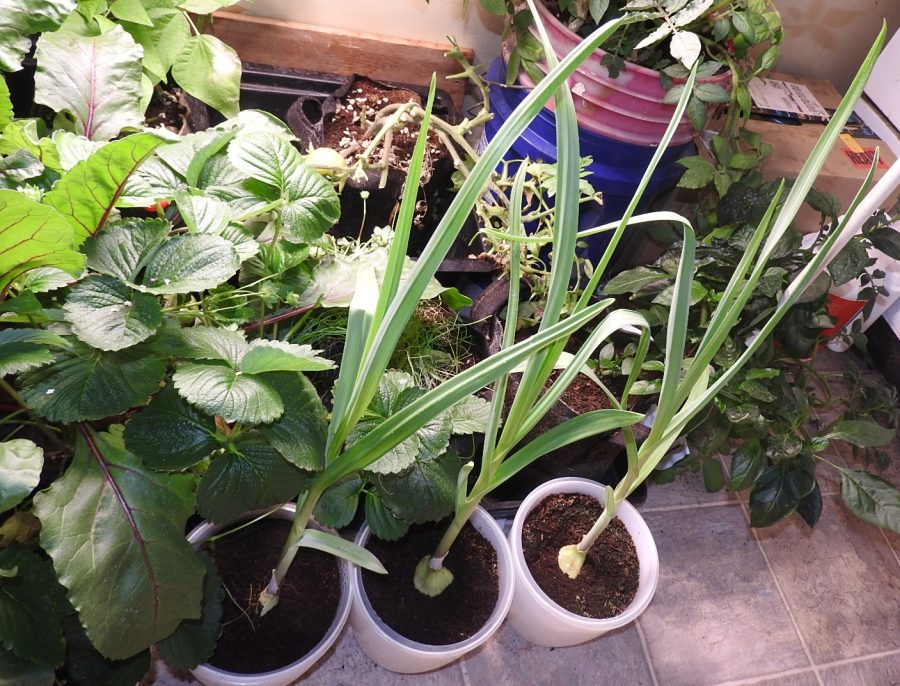
Are you ready to take the plunge and incorporate coco coir into your indoor gardening routine? Fantastic!
In this section, we’ll guide you through the process of using coco coir for your plants, from preparation to maintenance.
We’ll cover everything you need to know to make the transition to this incredible growing medium as smooth as possible.
So, let’s get started and help your plants enjoy the many benefits of coco coir!
Picking the Perfect Blend: Choosing the Right Type of Coco Coir
When it comes to selecting the right type of coco coir for your plants, consider the specific needs of your green companions.
For most indoor plants, a blend of coco peat, coco fiber, and coco chips provides the ideal balance of water retention, aeration, and drainage.
If you’re working with plants that require specific growing conditions, you can customize your coco coir blend by adjusting the ratios of the different components to suit their needs.
Getting Ready to Grow: Preparing Coco Coir for Use
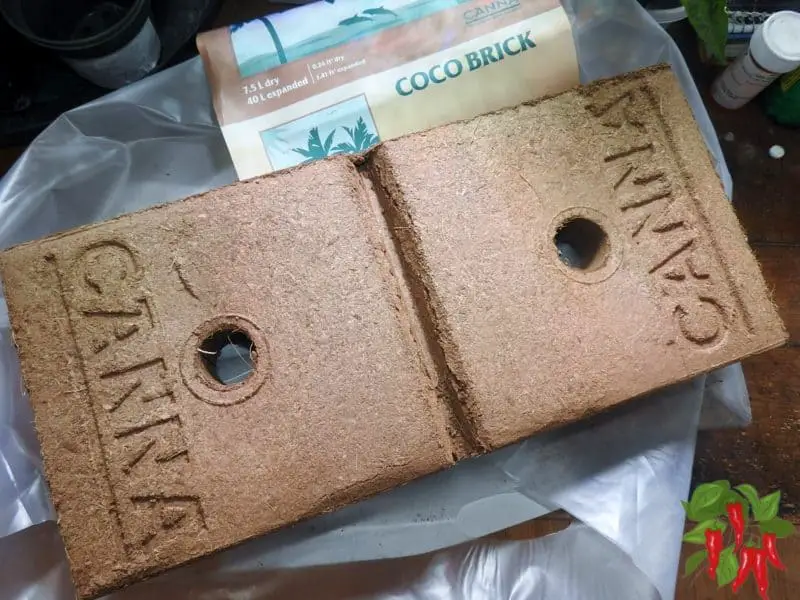
Hydrating and Rinsing: Quenching Coco Coir’s Thirst
Coco coir usually comes in a compressed form, so you’ll need to hydrate it before use.
Place the compressed block in a large container and add water, allowing it to expand as it absorbs the moisture.
Once fully expanded, rinse the coco coir thoroughly with water to remove any excess salts. This step is crucial for ensuring a healthy environment for your plants.
Buffering Process (If Needed): Balancing the Base
Some coco coir products might require buffering before use, particularly if they have high sodium and potassium levels.
Buffering also involves soaking the coco coir in a calcium and magnesium solution to help balance its nutrient profile.
Follow the instructions provided by the manufacturer to determine if buffering is necessary and how to carry out the process.
Creating the Ideal Mix: Combining Coco Coir with Other Media
To enhance the properties of coco coir even further, consider mixing it with other growing media, such as perlite.
Perlite helps to increase drainage and aeration, providing an even better environment for your plants.
A common ratio to start with is a 70:30 mix of coco coir to perlite, but you can adjust this ratio based on the specific needs of your plants.
Feel free to experiment and find the perfect blend to help your indoor garden flourish!
How to Use Coco Coir for Houseplants
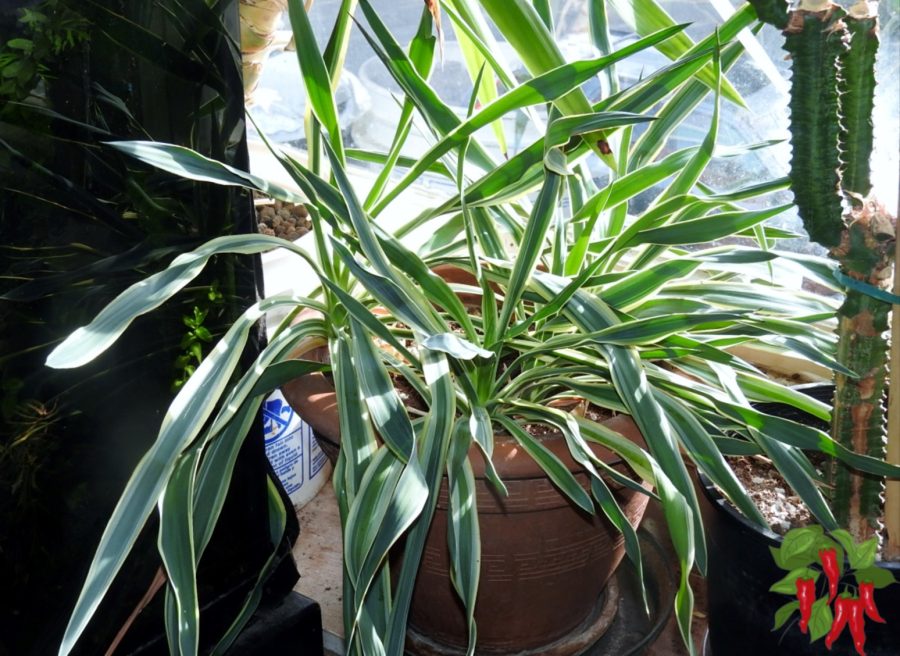
You’re all set to embrace the world of coco coir, but how exactly do you go about using it for your houseplants?
Don’t worry, we’ve got you covered! In this section, we’ll walk you through the steps of repotting your plants into this fantastic growing medium.
From selecting the right container to watering and feeding your newly repotted plants, we’ll make sure you’re well-equipped with the knowledge and confidence to help your indoor garden thrive in coco coir.
Let’s get your plants cozy in their new coco coir homes!
The Repotting Roadmap: A Step-by-Step Guide to Transplanting Your Plants
• Gather your supplies: Prepare your coco coir mix, perlite (if using), a suitable container with drainage holes, and any necessary tools like a trowel or gloves.
• Gently remove the plant: Carefully take the plant out of its current pot, making sure to avoid damaging the roots.
• Inspect and trim roots: Examine the root system for any damaged, dead, or circling roots, and trim them away as needed.
• Prepare the container: Fill the bottom of the new container with a layer of your prepared coco coir mix.
• Position the plant: Place the plant in the container, ensuring that the top of the root ball sits slightly below the rim of the pot.
• Fill with coco coir mix: Add the coco coir mix around the sides of the root ball, gently pressing it down to eliminate air pockets.
• Water thoroughly: Give the plant a good watering to help the coco coir settle and establish good contact with the roots.
Quenching Thirst and Fueling Growth: Watering and Fertilizing Tips
• Watering: Coco coir retains moisture well, so you may need to adjust your watering schedule.
Allow the top inch of coco coir to dry out before watering again to prevent overwatering.
• Fertilizing: Since coco coir doesn’t provide essential nutrients, use a balanced, water-soluble fertilizer at the recommended rate.
Be sure to choose a fertilizer that includes calcium and magnesium to help maintain the proper nutrient balance.
Keeping Things Balanced: Monitoring and Adjusting pH Levels
Test the pH: Periodically test the pH of the coco coir to ensure it remains within the ideal range for your plants (usually between 5.5 and 6.8).
You can do this by measuring the runoff after watering.
Adjust pH if needed: If the pH is outside of the optimal range, use a pH adjuster to raise or lower the pH according to your plants’ needs.
Monitor plant health: Keep an eye on your plants for any signs of nutrient deficiencies or pH imbalances, and make adjustments as needed to maintain a healthy growing environment.
FAQ
Q: Is coco coir good for houseplants?
A: Yes, coco coir is an excellent growing medium for many houseplants. It provides a great balance of moisture retention, aeration, and drainage, which creates an ideal environment for various indoor plants.
Additionally, it is a sustainable and eco-friendly option, making it a popular choice among environmentally conscious plant enthusiasts.
Q: How do you use coconut coir for potted plants?
A: To use coco coir for potted plants, begin by hydrating and rinsing the compressed coco coir block.
Once expanded, mix it with other growing media like perlite, if desired, to improve drainage and aeration.
Then, gently remove the plant from its current pot, trim any damaged roots, and position the plant in a new container filled with the prepared coco coir mix.
Water the newly potted plant thoroughly to help the coco coir settle around the roots.
Q: Can I use coco coir instead of potting soil?
A: Yes, you can use coco coir instead of potting soil for many types of plants. Coco coir offers numerous benefits like improved aeration, water retention, and resistance to pests and diseases.
However, remember that coco coir doesn’t provide essential nutrients, so you’ll need to use a balanced, water-soluble fertilizer to ensure your plants receive proper nutrition.
Q: What are the disadvantages of coco coir?
A: While coco coir has many advantages, there are a few potential disadvantages to consider:
Lack of nutrients: Coco coir doesn’t naturally contain essential plant nutrients, so you’ll need to supplement with fertilizers.
Possible high salt content: Some coco coir products may have high sodium and potassium levels, which can be harmful to plants. Rinsing and buffering the coco coir before use can help address this issue.
Incompatibility with certain plants: Some plants with specific nutrient requirements or those that prefer alkaline soil might not be ideal candidates for coco coir.
Always research your plants’ needs to ensure coco coir is a suitable choice for them.
Coco Coir for Indoor Plants Final Thoughts
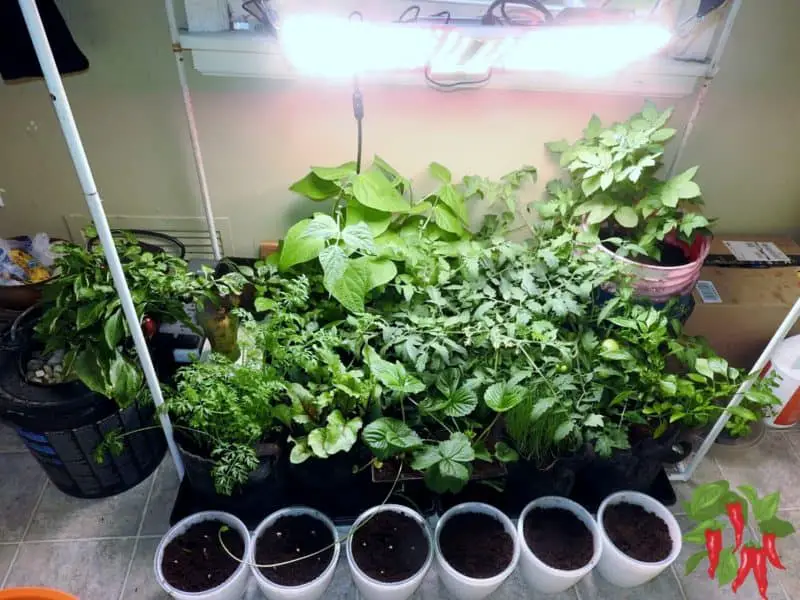
As we wrap up our journey through the world of coco coir for indoor plants, we hope you’ve gained valuable insights into this sustainable and versatile growing medium.
From understanding its origins and benefits to mastering its use for various types of plants, you’re now well-equipped to introduce your leafy companions to the wonders of coco coir.
With a little practice and attention to detail, you’ll soon be nurturing a thriving indoor garden that both you and your plants can be proud of.
So, go ahead and give coco coir a try – your plants will thank you for it!
The Coco Coir Recap: Celebrating the Benefits for Indoor Plants
• Optimal growing conditions: Coco coir provides the perfect balance of moisture retention, aeration, and drainage, creating an ideal environment for a wide range of indoor plants.
• Environmental friendliness: Sourced from a renewable resource, coco coir helps reduce the use of nonrenewable alternatives like peat moss, promoting sustainability in the process.
• Plant health and resilience: The natural resistance of coco coir to pests and diseases, along with its ability to foster strong root systems, contributes to healthier, more robust plants.
Planting the Seeds for a Greener Future: Encouraging Sustainable Gardening Practices
By choosing coco coir for your indoor plants, you’re not only enhancing their well-being but also making a conscious decision to support more sustainable gardening practices.
By opting for a renewable and eco-friendly growing medium, you’re playing a role in preserving our planet’s precious resources for future generations.
Embracing coco coir is a small yet impactful step towards creating a greener, more sustainable world for both plant lovers and the environment alike.
So, let’s continue to nurture our indoor gardens and make a positive difference, one pot at a time!
Read more: 20 Benefits Of Keeping Indoor Plants For Improved Lifestyle






